OPEN TO ALL
OUR MUSEUM has been known by a few names throughout its history—the Free Museum of Science and Art, the University Museum, the University of Pennsylvania Museum of Archaeology and Anthropology. What has remained constant is the Museum’s commitment to leading trailblazing discovery and unlocking the wonder of the human story. The Penn Museum is a university museum that is open to all, committed to sharing our world-class collections and resources in order to foster connection and build understanding in a complex world. Now, the Museum has a new look that represents this openness.
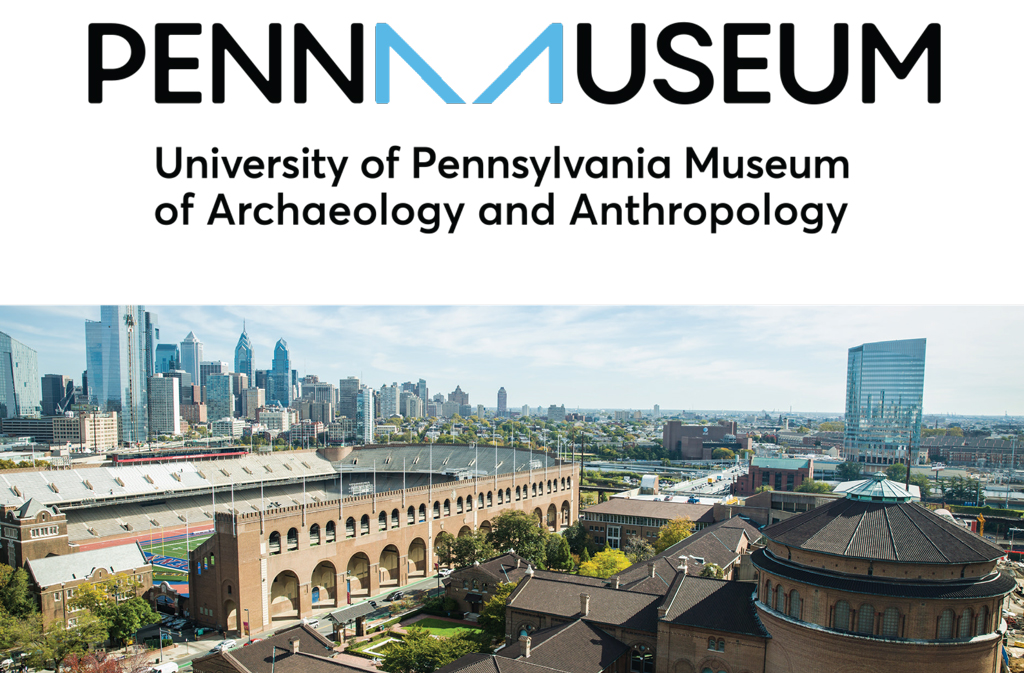
The Penn Museum invites all visitors to step through our doors—in person or through the Digital Penn Museum—and connect with other peoples across time and place. The Museum is a portal to exploration and inspiration. Our new logo, designed by LaPlaca Cohen (New York), connotes this invitation.
The two letters “A” of archaeology and anthropology come together to form the “M” of Museum. This “M” is open in the center, suggesting a doorway that opens onto the many stories and artifacts that make us America’s museum of ancient worlds. The blue of our new logo is that of the sky—something that we all share, and that extends over all of history and Penn’s excavations and research that illuminate it.
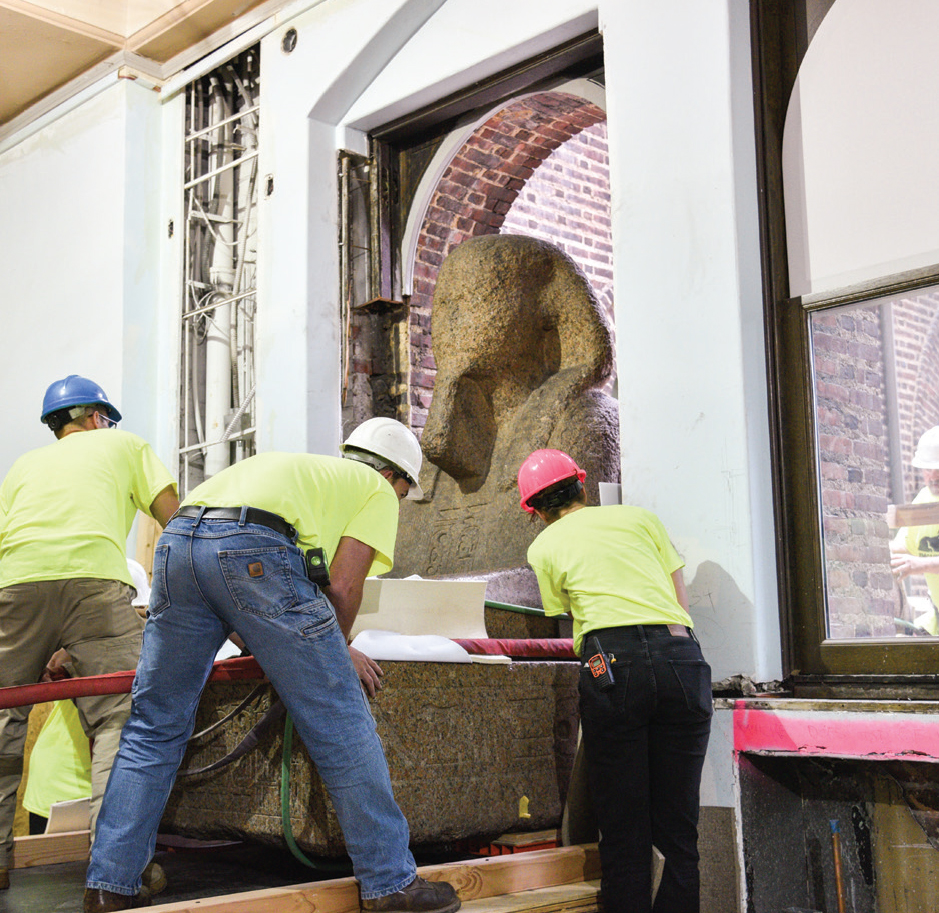
Find Your Own Journey
WHEN YOU NEXT VISIT, you will notice that the Museum’s new look extends to our wayfinding. Working with Exit Design (Philadelphia), we have redone our wayfinding from top to bottom, resulting in a more visitor-friendly approach to maps and signage.
A WELCOME FOR ALL
Stepping through the doors of the Main Entrance, you will notice the Sphinx straight ahead, greeting all visitors to the Museum. You will also notice a new welcome on the west wall, conveying “welcome” in 19 languages that represent many of our visitors from around the world.
NAVIGATING THE MUSEUM
The Museum is a large building with several wings, situated at a busy intersection. To help all visitors orient themselves, we have marked our entrances with more descriptive names.
Trescher Entrance
| PREVIOUSLY | NOW |
|---|---|
| Main (Kamin) Entrance | Main Entrance |
| Group (Kress) Entrance | East Entrance |
| Trescher Entrance | Courtyard Entrance (for special events) |
| Harrison Entrance | Harrison Entrance (for special events) |
This simplified wayfinding continues inside the Museum with renamed levels for public spaces:
3rd Floor
| PREVIOUSLY | NOW |
|---|---|
| 1st Floor | Lower Level |
| 2nd Floor | Main Level |
| 3rd Floor | Upper Level |
Accessibility is a priority for this Museum open to all visitors. In addition to new visitor amenities that include air-conditioning, seating areas, and new restrooms, the first phase of the Building Transformation project added two new elevators—in the new Sphinx Gallery and Gateway to Egypt—so that the entire Museum is fully accessible.
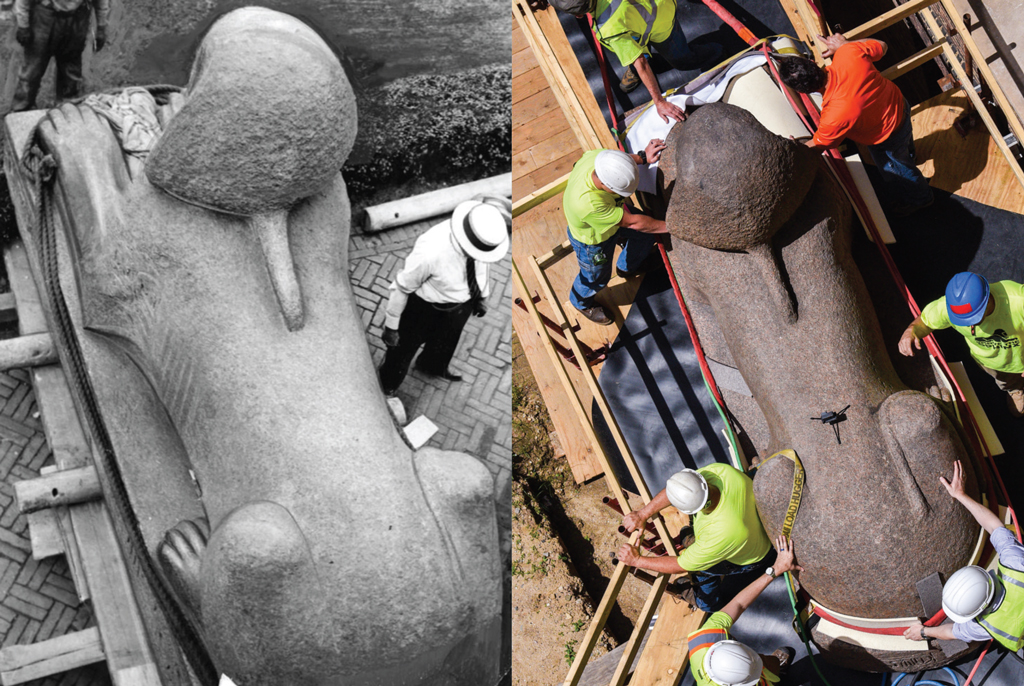
Moving a Monument
ON JUNE 12, surrounded by a team of conservators and expert riggers, the Museum’s great Sphinx of Ramses II made stately progress from the Egypt (Sphinx) Gallery, across the inner courtyard, and—with just over an inch of clearance on either side—into the space opening this month as the new Sphinx Gallery (formerly the stairs down to Harrison Auditorium). Twelve and a half tons of red granite rested on pads of compressed air, in a journey that was streamed live and watched by people across the world, featured in local and national media stories, and trended on Twitter.
Harrison Auditorium
WELCOME BACK TO OUR GRAND AUDITORIUM
THE RENOVATION of the historic Harrison Auditorium would not have been possible without the generosity of donors who named seats in the Auditorium. Their names, or the names of those they wished to honor, are displayed on brass armrest plaques on the newly refurbished seats— which will be enjoyed by the many guests attending programming in the reopened Auditorium.
JOIN US FOR LECTURES AND MORE
On Friday, November 15, join us for the first event held in the renovated Auditorium: the premier of a 30-minute documentary on the making of the new Africa Galleries. This event will be free for members and the University community, kicking off a weekend of reopening festivities.
Our “Great Catastrophes” Lecture series, on the great disasters of history and how they have shaped societies, kicked off last month. In December, the “Great” lectures will return to the Harrison Auditorium with Dr. C. Brian Rose’s talk on Pompeii. (For more information and the series schedule, visit www.penn.museum/greatlectures.)
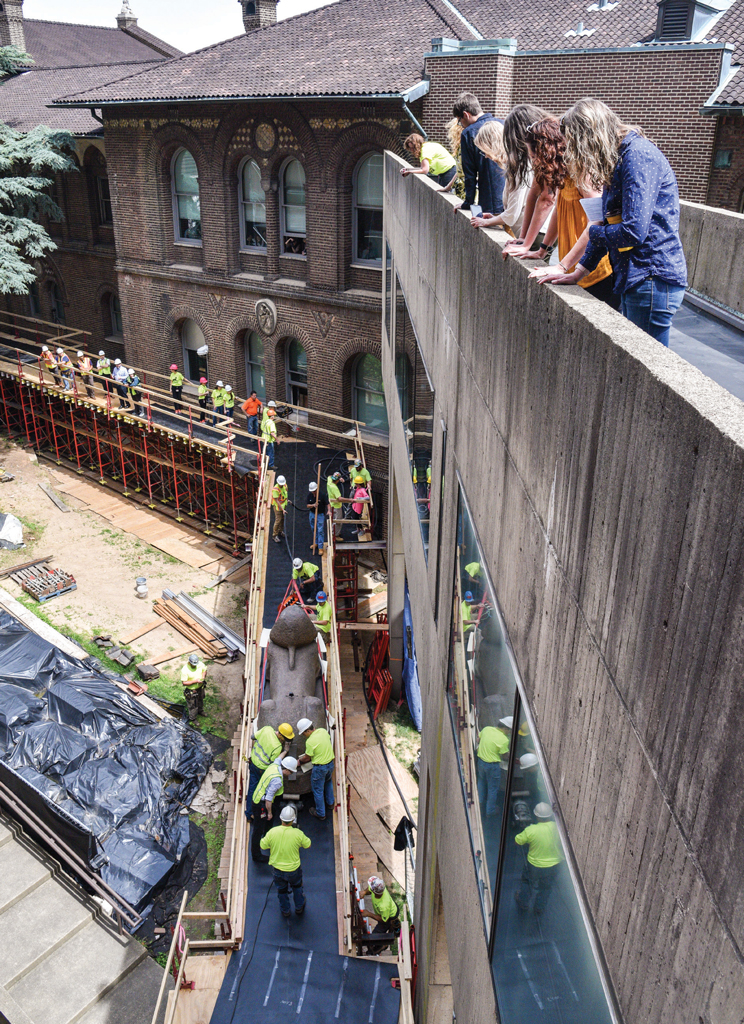
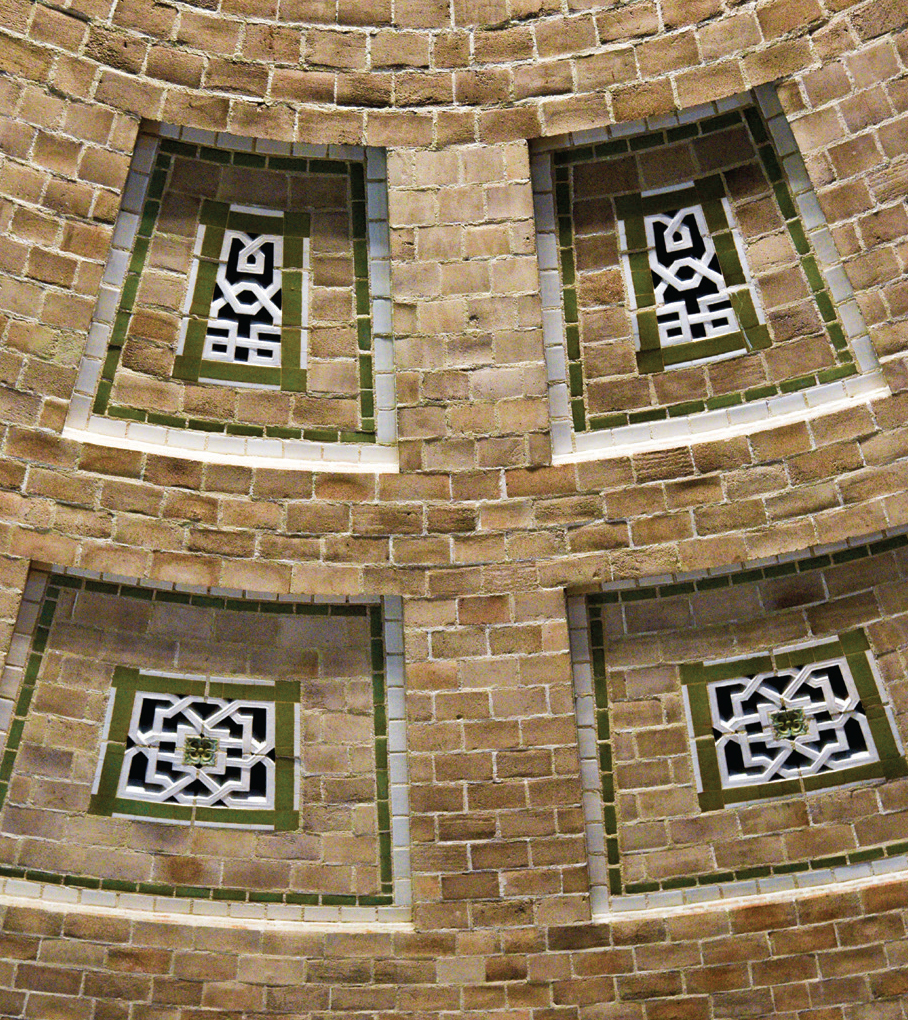
The New Penn Museum Opening Weekend Celebration
SATURDAY AND SUNDAY, NOVEMBER 16–17
A VIBRANT PUBLIC CELEBRATION of the new Penn Museum on November 16 and 17 will begin outside our Main Entrance doors just before 10:00 am on Saturday, with jubilant musical performances in the garden from Aztec group Ollin Yoliztli Calmecac and the Universal African Dance and Drum Ensemble. Following blessings from Yoruban and Maya spiritual leaders to mark the ceremonial openings of the new Africa and Mexico and Central America Galleries, Williams Director Julian Siggers will welcome and invite guests inside to meet the Sphinx and explore these new galleries—and all that the reimagined Penn Museum has to offer.
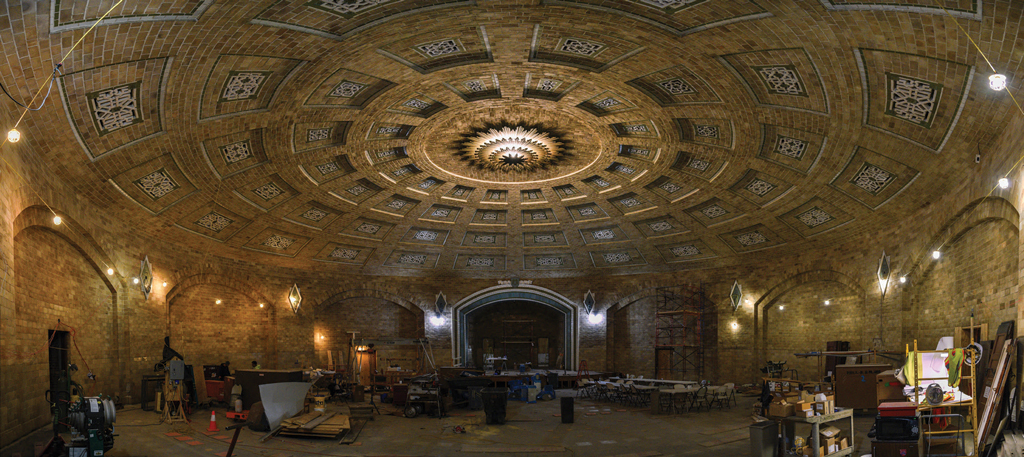
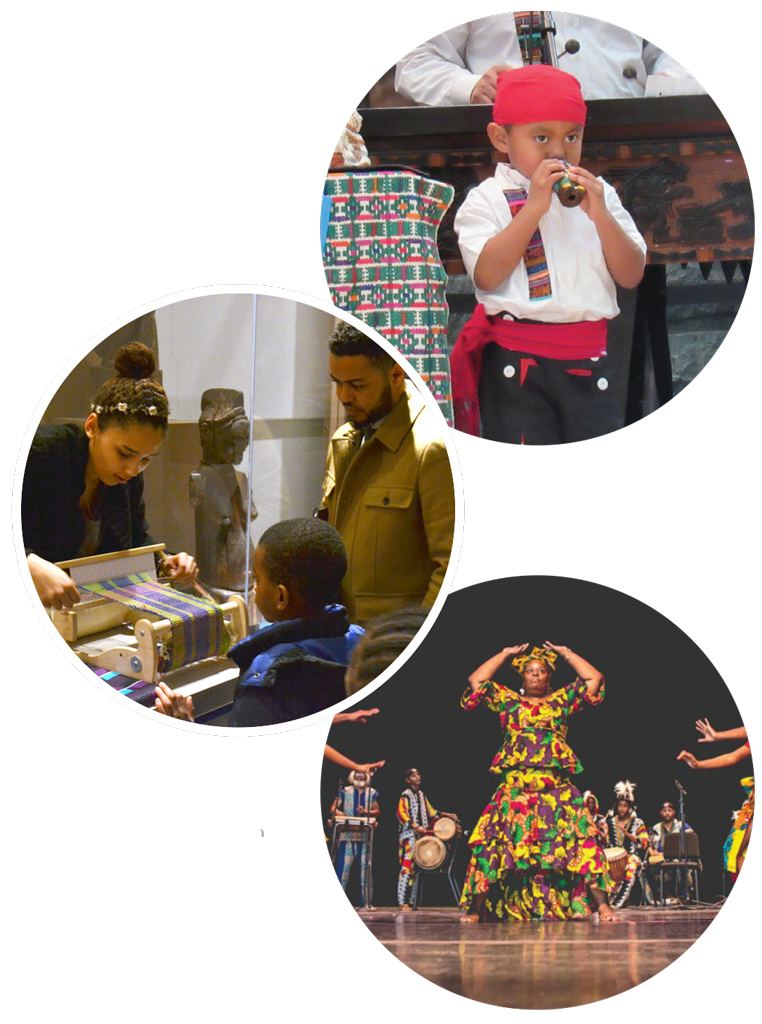
Dance and musical performances will continue through the weekend across the Museum—including in the renovated Harrison Auditorium—by Guatemalan group Maya Awal, Troupe Da Da African Dance, Universal African Dance and Drum Ensemble, and others. Visitors are invited to participate in craft activities—including writing in Maya glyphs and Egyptian hieroglyphs—and to “Meet the Experts” in the galleries: curators, curatorial advisors, and the new Global Guides for the Mexico and Central America Gallery and Africa Galleries. (Our new Global Guides will begin giving tours of these galleries later this month—check the Museum website for details.)
A Saturday symposium on the Africa Galleries, organized by Lead Curator Tukufu Zuberi, will bring together the curatorial advisory board in a morning panel to discuss the planning of the Galleries, and, in an afternoon panel, the four contemporary artists whose commissioned work in the Galleries offers fresh perspective on the collections displayed.
Highlights of the continuing celebration on Sunday November 17 include the public premier of a documentary on the making of the Africa Galleries by Dr. Zuberi, including interviews conducted in Africa this past summer with museum directors and curators— offering not only an important perspective on the objects in the galleries but a chance to experience the state-of-the-art new audio-visual capabilities of the Harrison Auditorium.
